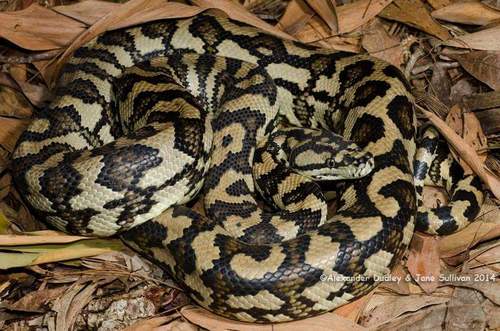
Carpet Python
The Carpet Python (Morelia spilota) dazzles with its intricate scale patterns, resembling a woven tapestry. Found across diverse Australian landscapes, this non-venomous constrictor helps balance ecosystems by preying on rodents and birds. Its adaptability and striking appearance make it a captivating species to observe.
20 years
Lifespan
Length: 3.6576 m
Size
Brown, Yellow, Black
Color
Low
Aggression
Least Concern
Conservation Status
Decreasing
Population Trend
Characteristics
Morelia spilota, commonly known as the Carpet Python, is native to Australia and New Guinea. It thrives in a variety of habitats, including rainforests, woodlands, and suburban areas. Notable for its striking patterned scales resembling a carpet, it varies in color and pattern across its range. Carpet Pythons are non-venomous, constricting prey like mammals and birds. They play a crucial ecological role in controlling pest populations.
Distribution Range of the Carpet Python
Morelia spilota, commonly known as the Carpet Python, is native to Australia and New Guinea. In Australia, it is found across the eastern, northern, and western parts of the continent. Its range extends from the northern regions of Western Australia through the Northern Territory, Queensland, New South Wales, and Victoria. It is also present on some islands within the Torres Strait.
Carpet Python's Habitat
Environmental Conditions
The Carpet Python occupies a diverse range of habitats, including tropical and subtropical rainforests, dry woodlands, coastal heaths, and savannahs. It can also be found in urban areas, often adapting to human-modified environments. The species can thrive in various climates, from humid rainforests to arid inland regions.
Ecological Niche
Morelia spilota is an arboreal to semi-arboreal species, often found in trees or on rocky outcrops. It plays a significant role in controlling rodent and bird populations in its ecosystem. The Carpet Python is a nocturnal predator, utilizing its camouflage to ambush prey. Its adaptability to different environments allows it to occupy a wide ecological niche across its range.
Copyright @ Nature Style Limited. All Rights Reserved.
 English
English